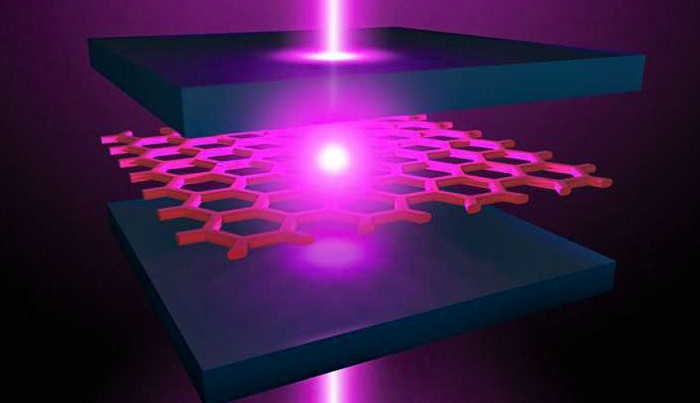Particles with negative mass?
January 17, 2018
on
on

Objects are made of matter and have the property of ‘mass’ - even elementary particles without rest mass, by virtue of their energy. They react to an externally applied force in the way you expect them to. Particles with ‘negative mass’ however exhibit the opposite reaction to an applied force.
Researchers at the University of Rochester have managed to produce particles with negative mass in an atomically thin semiconductor material. According to Nick Vamivakas of the Rochester Institute of Optics the results of their research are both interesting and exciting from a purely physics point of view but it also turns out they have created a device that can generate laser light using an incrementally small amount of energy.
The device consists of two mirrors to make an optical microcavity which can confine light at different colors of the spectrum depending on the mirror spacing. An atomically thin molybdenum diselenide semiconductor is then embedded into the microcavity. This interacts with the trapped light, so that small particles called excitons from the semiconductor combine with photons of the confined light to form polaritons. This process of an exciton giving up its identity to a photon to produce a polariton results in an object with negative mass associated with it. When you try to push or pull it, it goes off in the opposite direction to way you would expect.
Although practical applications are still a long way off, the lab is already researching some aspects of their results:
• As a laser fabrication substrate: Due to polaritons, lasers would function completely differently from conventional ones, the system starts lasing with much lower energy input.
• The physics of negative mass: It should be investigated more closely the reaction behavior of polaritons on electric fields and external forces.
In the journal Nature Physics, S. Dhara et al. have published report of their research with the title Anomalous dispersion of microcavity trion-polaritons
Researchers at the University of Rochester have managed to produce particles with negative mass in an atomically thin semiconductor material. According to Nick Vamivakas of the Rochester Institute of Optics the results of their research are both interesting and exciting from a purely physics point of view but it also turns out they have created a device that can generate laser light using an incrementally small amount of energy.
The device consists of two mirrors to make an optical microcavity which can confine light at different colors of the spectrum depending on the mirror spacing. An atomically thin molybdenum diselenide semiconductor is then embedded into the microcavity. This interacts with the trapped light, so that small particles called excitons from the semiconductor combine with photons of the confined light to form polaritons. This process of an exciton giving up its identity to a photon to produce a polariton results in an object with negative mass associated with it. When you try to push or pull it, it goes off in the opposite direction to way you would expect.
Although practical applications are still a long way off, the lab is already researching some aspects of their results:
• As a laser fabrication substrate: Due to polaritons, lasers would function completely differently from conventional ones, the system starts lasing with much lower energy input.
• The physics of negative mass: It should be investigated more closely the reaction behavior of polaritons on electric fields and external forces.
In the journal Nature Physics, S. Dhara et al. have published report of their research with the title Anomalous dispersion of microcavity trion-polaritons
Read full article
Hide full article


Discussion (1 comment)